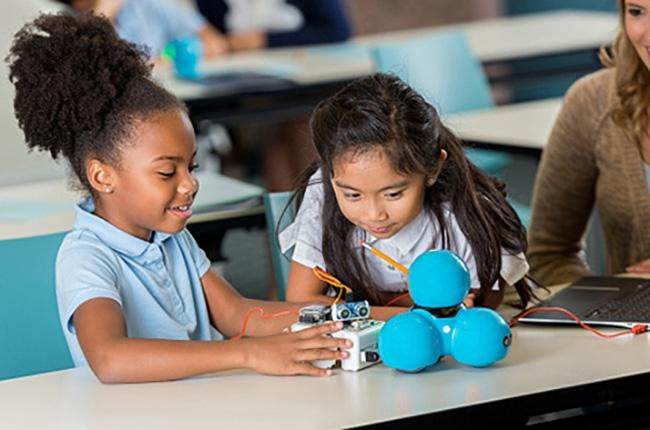Three and A Half Principles of Extraordinary Techniques for Math Teaching

Sometimes mathematics can be a double-edged sword for those teaching and those trying to learn it. So if you’ve struggled to teach or do math, you’ve probably also gone online to get tips to improve. And the chances are that you’ve come across Dan Finkel’s TEDx talk on extraordinary techniques for maths teaching. He speaks on how it’s essential to enable students to learn math in a way that embraces their doubt, imagination, and play with mathematical thinking.
While watching Dan’s TEDx talk, I drew up a few principles that can further enhance maths teaching and learning. We must understand that student engagement in a math lesson is often more crucial than the lesson’s content. Students should be allowed to approach math questions in a way they can relate. As a teacher, you should let them present and argue their ideas and solutions. Then you can work with them to arrive at the right answers. This way, they can participate and think more critically. Now let’s consider three and a half principles of extraordinary techniques for maths teaching.

1. Never Start by Providing the Answer, Let the Student Try to Figure It Out
When a teacher steps in to give answers without letting the student try, the students learn less. If you give them the answers, the students will see you as the only source of knowledge. They will likewise be reluctant to put in any effort if they know you’ll give them an easy way out. It is okay to discuss techniques, principles, and concepts, but don’t solve the math problem for them!
Best Algebra Prep Resource
Of course, you can get involved in the problem-solving process. But let the students take the lead, while you guide and encourage them. An extraordinary technique is to know when to step in and when not to. Sometimes the students may be unable to solve the question but still make attempts to solve the equation. Allow them to keep making progress by encouraging them and asking them guiding questions. For instance, “Have you tried …?” “What steps have you taken so far?”

However, there are times when the student has reached a level of hopelessness about the problem. You can step in by rephrasing the questions to a more straightforward and fundamental math problem. Also, try to identify the learning gaps. In both cases, remember to give the students time to keep trying and persevere.
2. Use Student Names and Games to Entice Learning
When you use your students’ names in a math question, it keeps them more engaged. It helps particularly for a student who has difficulty staying attentive. For example, you may say, “if Grey picks five apples from the garden and has to give his baby sister two apples. How many apples does Grey have left?” If you phrase the question immediately this way, you’ll have Grey’s attention and even his friends. Another technique is to make use of visual objects. You can get five apples to illustrate the question further.
Alternatively, you can incorporate games to enhance maths teaching. Students are so engrossed in having so much fun that they don’t see math as challenging when you include games. You can place the students into two groups and provide them with props to solve an equation. Let them know that the first team to get the correct answer gets two points, while the second receives one point. Games like these not only improve learning but also foster teamwork.

3. Allow Students to Express their Ideas
Maths for any class or grade requires creative and critical thinking. It requires a student to make connections between distinct concepts and the translation of knowledge into new contexts. Creative thinking can be tasking when the student is overwhelmed with a fear or dislike for maths. When teaching difficult math problems, remember that the student is in a delicate state. Their thinking is tense and full of uncertainty. It can translate to wrong ideas and solutions.
As a teacher, try not to shut down the student’s thinking process and point out rightly that they’re wrong. Provide your students with all the support they need to push their creative and problem-solving skills. Be affirmative to their creative process and respond with an enthusiastic “I don’t know, let’s find out!”

Bonus: Make Use technology to Engage Your Students.
And for our half principle, the extraordinary technique is the use of technology! The role of artificial intelligence in education has been on a steady rise. And it is something we cannot overlook because it is an excellent motivator for several students. Reports point out that by 2021, AI technology in education and learning will increase by 47.5%. Technology changes how students now learn using smart devices and robotics.
AI technology enables better delivery of content that students can comprehend. For example, these AI tools include virtual content such as online assistance programs, illustrative videos, or flashcards. These tools allow educators to personalize curriculum for students’ math learning needs. Since not every student can learn at the same pace, technology gives the teacher a better understanding of how their students learn. With AI personalization tools, a personalized curriculum is designed to suit as many students as possible.
Additionally, the use of technology in maths teaching encourages instant feedback, which is a critical element of tutoring. Just as you have tools for essay writing services like Writing Judge and Pick The Writer, there are maths teaching and learning tools. Using AI software and tools, both the teacher and student can get targeted and customized responses.
Conclusion
Teaching or learning math does not have to be a nightmare. Math should be fun, and every student should be able to say, “I love maths!” confidently. Thus, keeping these tips in mind for your next class as a teacher or student can help you push your grade to love math.
With these three and a half principles of extraordinary techniques, it won’t be surprising that your class suddenly starts looking forward to math time. The level of interaction, critical thinking, enthusiasm, and learning during maths will surely improve.
About the Author
Dominic Beaulieu is a gaming enthusiast turned tech writer who covers an impressive variety of topics like design, development process, and game marketing and helps developers with spreading the word about their creations. He is a fluent French speaker, who also has mastered Dutch, Norwegian, and Swedish. He has experience in software translation, tech counseling, project management, and digital marketing tailored for startups.
The Best Books to Ace Algebra
Related to This Article
More math articles
- ISEE vs. SSAT
- 5th Grade NYSE Math FREE Sample Practice Questions
- Unlocking the Secrets of Triangle Angle Bisectors
- SSAT Lower Level Math Practice Test Questions
- Number Properties Puzzle – Challenge 15
- AFOQT Math Formulas
- ACT Calculators: Exреrt Tiрѕ
- The Ultimate MTTC Mathematics (Elementary) (089) Course (+FREE Worksheets & Tests)
- How to Compare Linear Functions: Equations, Tables, and Graphs
- How to Solve Linear Equations in Two Variables?







What people say about "Three and A Half Principles of Extraordinary Techniques for Math Teaching - Effortless Math: We Help Students Learn to LOVE Mathematics"?
No one replied yet.